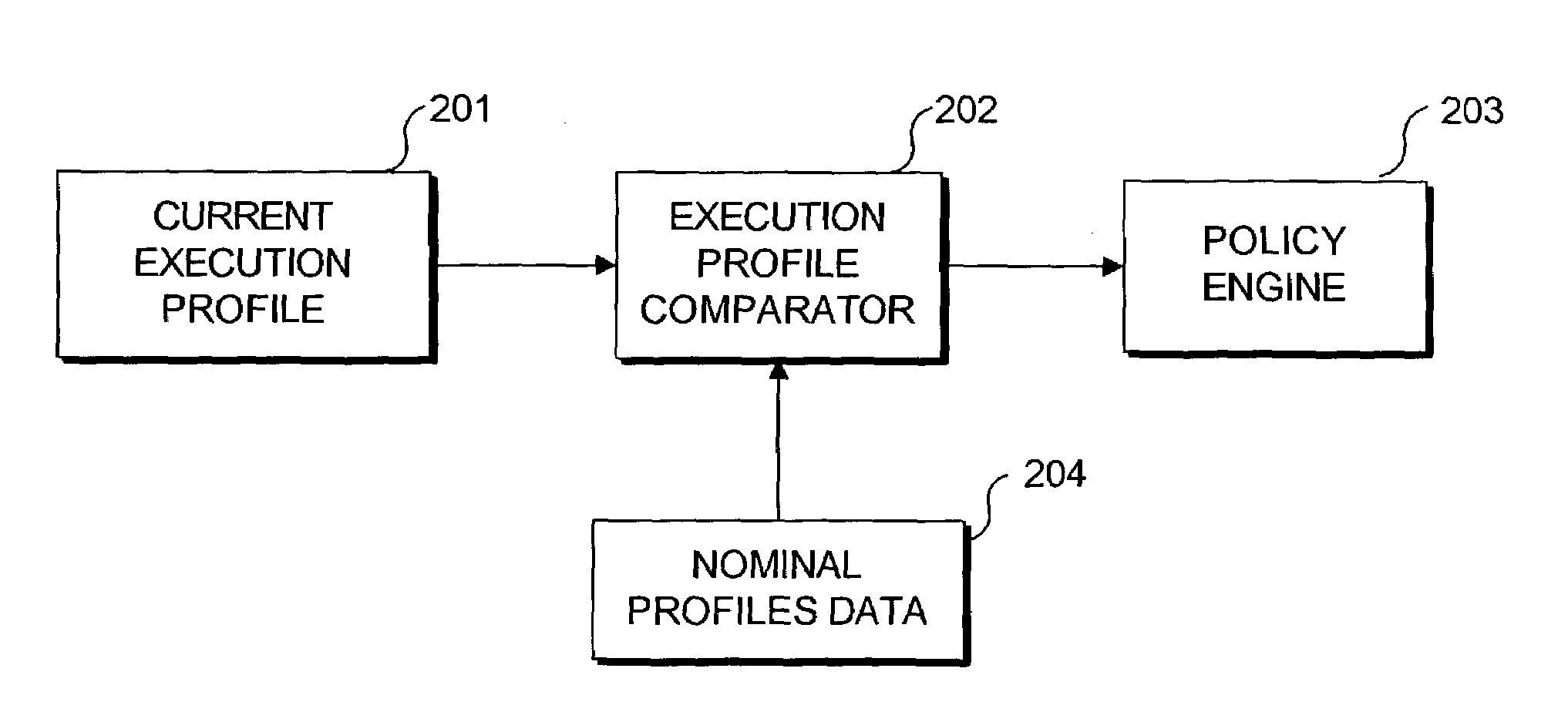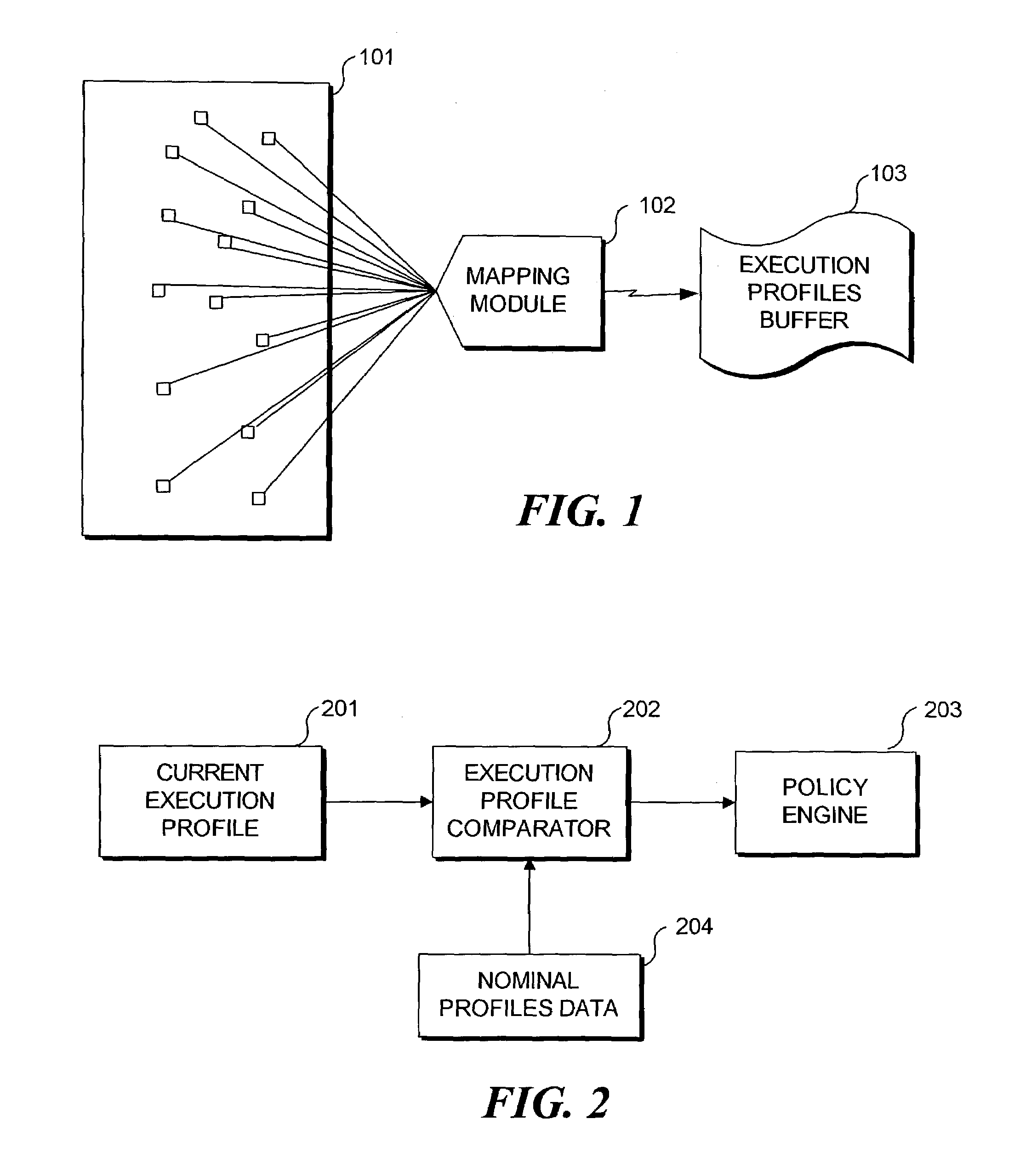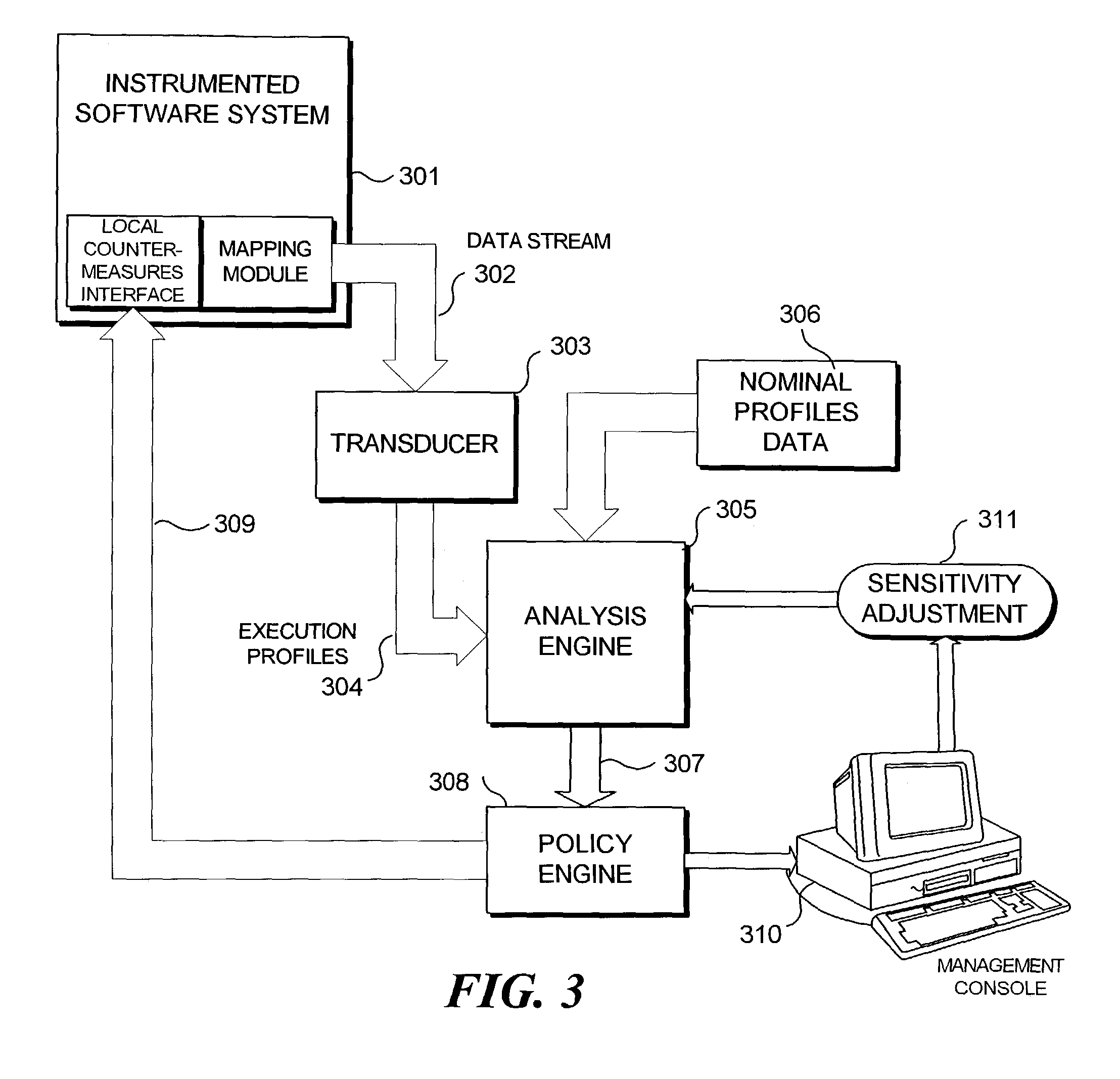Method and system for establishing normal software system behavior and departures from normal behavior
a software system and software technology, applied in the field of method and system for establishing normal software system behavior and departures from normal behavior, can solve problems such as security breaches, deliberate system misuse, and more egregious external behavior
- Summary
- Abstract
- Description
- Claims
- Application Information
AI Technical Summary
Problems solved by technology
Method used
Image
Examples
Embodiment Construction
Overview
[0019]As mentioned, a modern software system is composed of a plurality of subcomponents called modules. Each program module generally implements a specific functional requirement. As the program executes, each module may call another module. Through a specific sequence of calls from one module to another, a higher level of functional granularity is achieved. Many times there is a very tight binding between the sequences of calls to program modules. That is, one module may always call another module. If this is the case, there is a high correlation between the activities of the two modules. They are bound so closely together that they interact as one functional unit. Even where two modules do not act as a single functional unit, the activity of two modules may be correlated to a greater or lesser degree. One goal of the subject matter disclosed herein is to provide improved profiling techniques for use in analyzing interactions between and among program modules to identify a...
PUM
 Login to View More
Login to View More Abstract
Description
Claims
Application Information
 Login to View More
Login to View More - R&D
- Intellectual Property
- Life Sciences
- Materials
- Tech Scout
- Unparalleled Data Quality
- Higher Quality Content
- 60% Fewer Hallucinations
Browse by: Latest US Patents, China's latest patents, Technical Efficacy Thesaurus, Application Domain, Technology Topic, Popular Technical Reports.
© 2025 PatSnap. All rights reserved.Legal|Privacy policy|Modern Slavery Act Transparency Statement|Sitemap|About US| Contact US: help@patsnap.com



